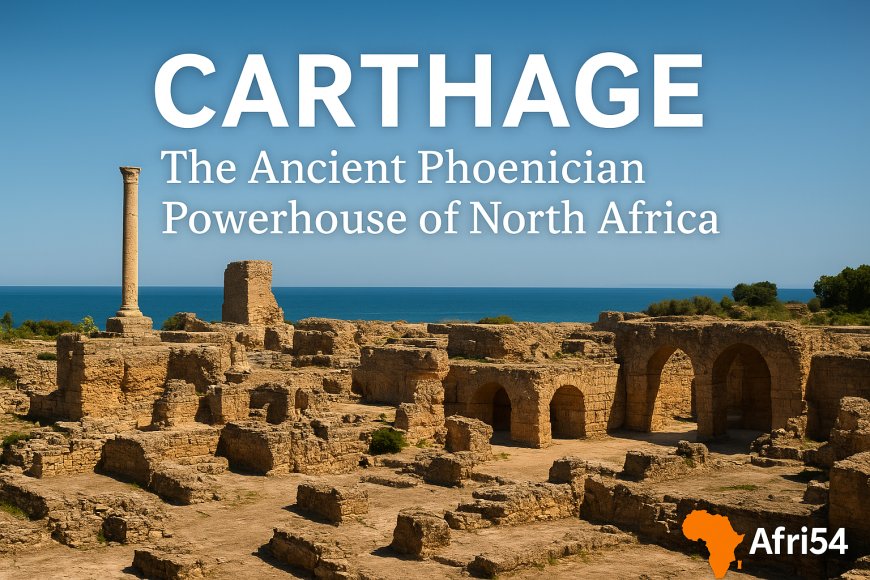Carthage: The Ancient Phoenician Powerhouse of North Africa
Explore the history of Carthage, the ancient Phoenician city in Tunisia that rivaled Rome, thrived on trade and seafaring, and later became a major Roman hub. Discover its legacy today.

Reading Time: ~7 minutes
Few ancient cities have captured the imagination of historians like Carthage. Founded in the 9th century BCE by Phoenician settlers from Tyre (in present-day Lebanon), Carthage grew into one of the greatest powers of the Mediterranean. Situated in modern-day Tunisia, this city-state became a dominant hub of trade, maritime strength, and cultural exchange, standing as a rival to mighty Rome until its fall in 146 BCE.
The Founding of Carthage
According to legend, Carthage was founded by Queen Dido (Elissa), who fled Tyre and established a settlement on the coast of North Africa. Its strategic location on the Gulf of Tunis made it an ideal point for trade across the Mediterranean and North Africa. From this foundation, Carthage expanded into a powerful Phoenician colony with extensive influence.
A Maritime Empire
Carthage’s rise was fueled by its mastery of seafaring and commerce. Its fleet dominated Mediterranean waters, and Carthaginian traders exchanged goods such as silver, tin, textiles, and agricultural products with partners from Spain to West Africa. This maritime prowess allowed Carthage to control key trade routes and establish colonies throughout the western Mediterranean.
Rivalry with Rome
Carthage’s ambition brought it into conflict with Rome, leading to the famous Punic Wars (264–146 BCE). The most legendary of these conflicts featured Hannibal Barca, who led his army — including war elephants — across the Alps to challenge Rome on its own soil. Despite Hannibal’s brilliance, Rome ultimately triumphed, culminating in the destruction of Carthage in 146 BCE. The city was razed, and its land was said to have been cursed.
Carthage Reborn
Despite Rome’s brutal conquest, Carthage rose again. Under Roman rule, the city was rebuilt and became one of the empire’s most prosperous provinces. Its fertile lands produced abundant grain and olive oil, vital for Rome’s food supply. Roman Carthage grew into a thriving urban center with amphitheaters, aqueducts, and temples, remnants of which can still be seen today.
Carthage Today
Modern-day Carthage, a UNESCO World Heritage Site, is a place where history is layered. Visitors can explore the ruins of Punic ports, Roman villas, theaters, and early Christian basilicas. These remains testify to Carthage’s enduring importance as both a Phoenician stronghold and a Roman metropolis.
Why Carthage Matters
Carthage stands as a symbol of Africa’s role in shaping ancient global history. It was a beacon of maritime innovation, a rival to Rome, and later a key province of the Roman Empire. Its story reflects the resilience of cities that rise, fall, and rise again, leaving behind legacies that shape civilizations.
Final Thoughts
To reflect on Carthage is to understand the fierce competition, cultural exchanges, and ambition that defined the ancient Mediterranean world. It is not just a tale of defeat by Rome, but also of a city whose memory still resonates as a testament to African ingenuity and power.
Have you listed your business on Afri54?
Afri54 exists to solve a fundamental challenge faced by millions of African businesses: lack of visibility. Whether you’re an automobile part seller in Lagos, a local attire manufacturer in Kigali, a coffee exporter in Addis Ababa, or a mobile phone supplier in Accra, you deserve to be seen. Join Now


















